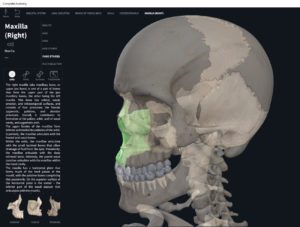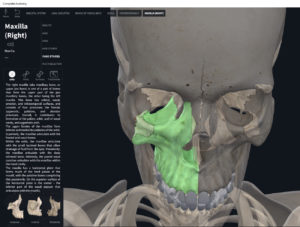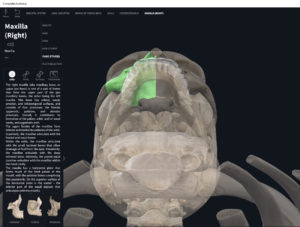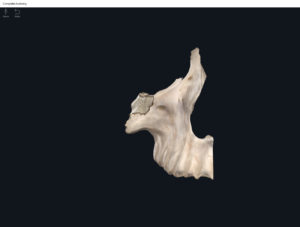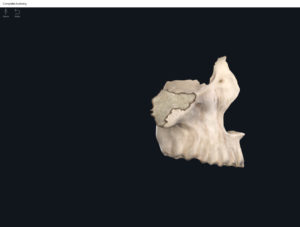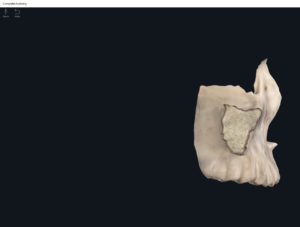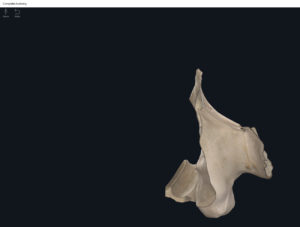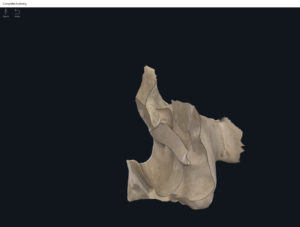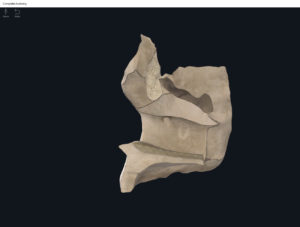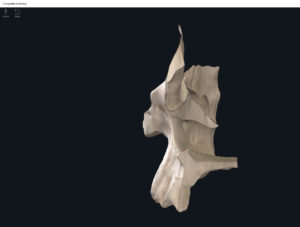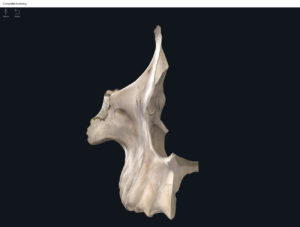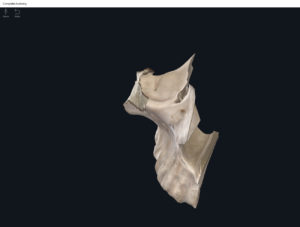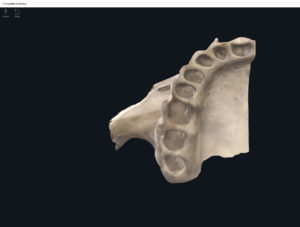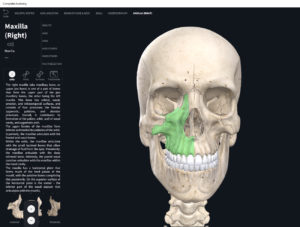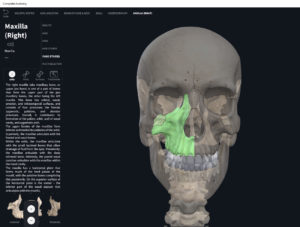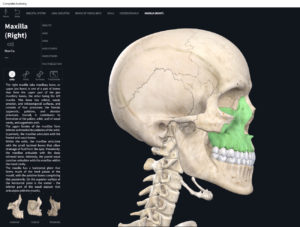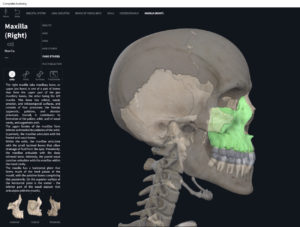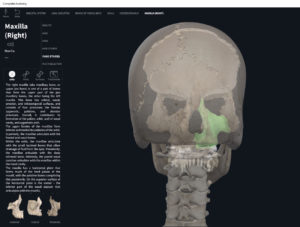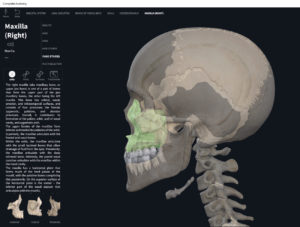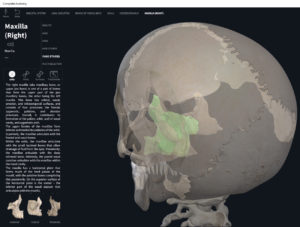Anatomy & Physiology: Bones—Skull, Maxilla.
Structure.
- The pair of maxillae form the upper jawbone.
- The maxillae articulate with every facial bone except the lower jawbone, the mandible.
- Forms the floor of the orbits, part of the lateral and inferior nasal walls, and a large portion of the hard palate.
- Hard palate: bony roof of mouth. The palantine processes of the maxillae form most of the hard palate along with horizontal plates of the palantine bones (separate from the maxillae). The hard palate separates the nasal and oral cavities.
- Maxillary sinus empties into nasal cavity.
- Alveolar processes: ridge that contains the sockets (alveoli) for the upper teeth.
- Palantine processes: horizontal projection forming anterior of hard palate.
- Infraorbital foramen: passageway for facial nerve.
- Incisive foramen: allows passageway for nerve and blood vessels to the hard palate.
- Inferior orbital fissure: passateway for nerves and vessels to the face.
Function.
- Upper jaw bone helps to break down food when eating.
Clinical Significance.
References
Biel, A. (2015). Trail guide to the body: A hands-on guide to locating muscles, bones and more.
Jenkins, G., & Tortora, G. J. (2012). Anatomy and Physiology: From Science to Life, 3rd Edition International Stu. John Wiley & Sons.
Muscolino, J. E. (2017). The muscular system manual: The skeletal muscles of the human body.

